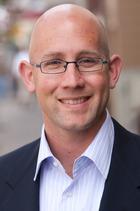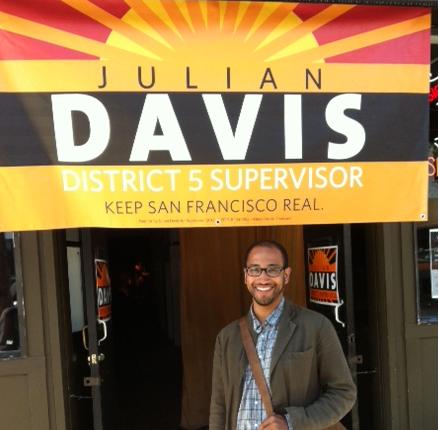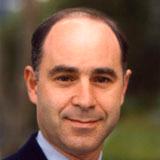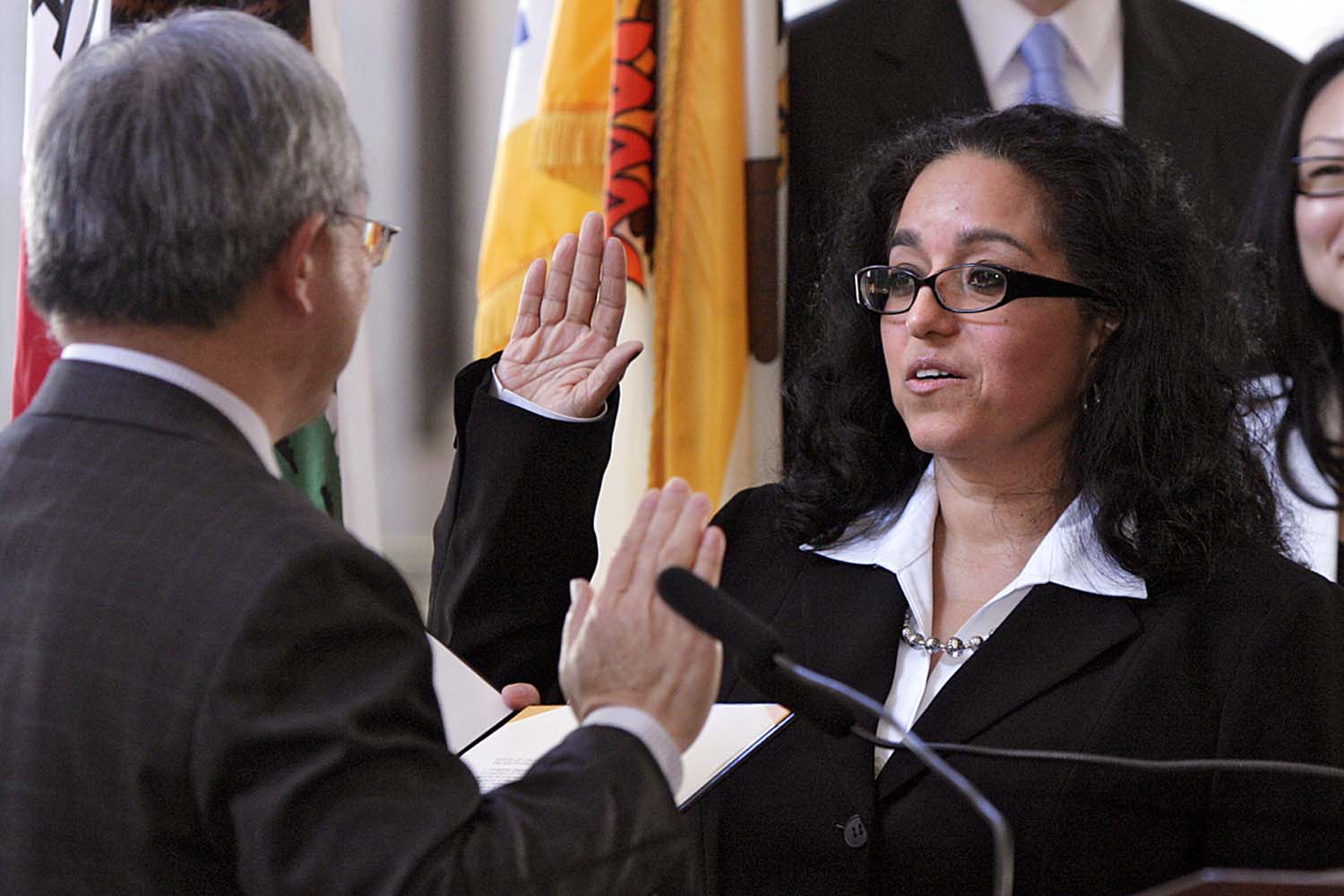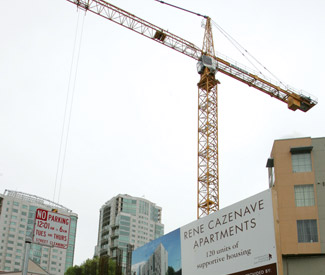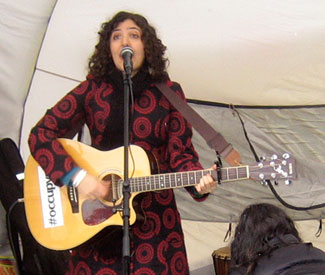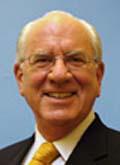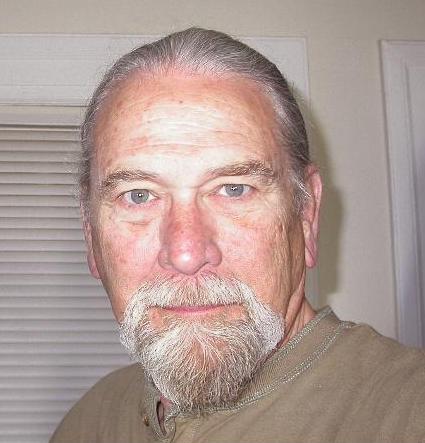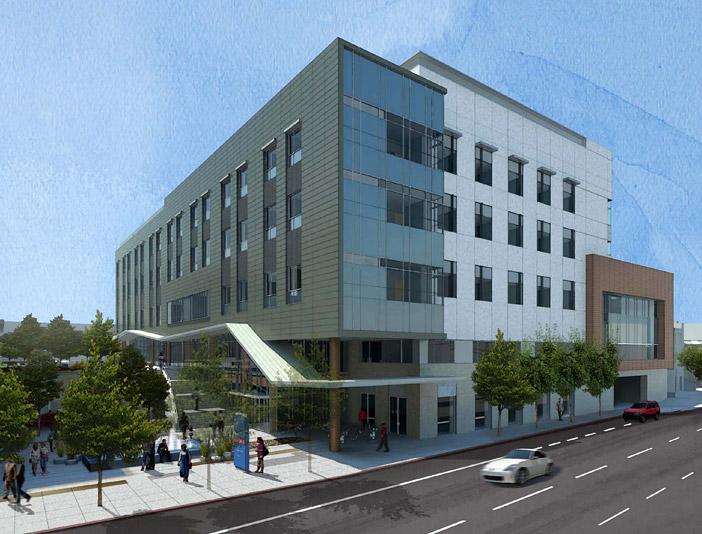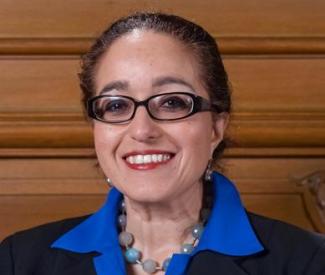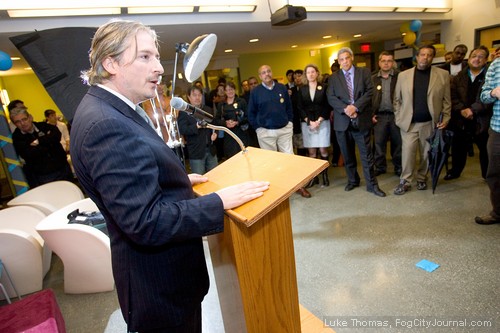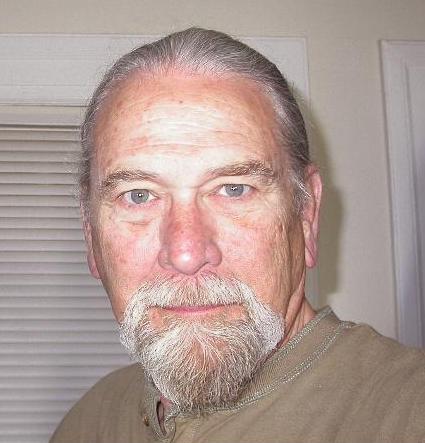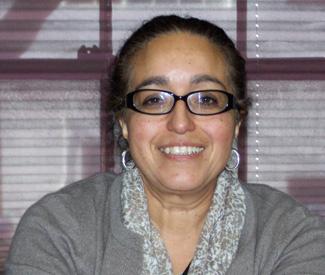Bay Area, our young people are wrapping words of wisdom around subjects like survival, poverty, oppression, community, life, and death. It’s time to listen up.
“Just like a picture is worth a thousand words, a word can provoke a thousand memories,” says Tele’Jon Quinn, one of seven 16 to 18-year-old Oakland youth poet laureate finalists. “Memorizing goes hand in hand with reflection. If my words can cause someone to reflect on an important issue or event in their life, then my words were worth sharing.” The East Bay bards are now preparing for the first group performance at the Art and Soul Festival in Oakland on Sat/4.
The Oakland Public Library teams up with Youth Speaks, the local youth spoken word nonprofit, to stage the competition. Like any poet laureate, the chosen versifier will officially represent his or her community via the media and public appearances.
A panel of celebrity judges including California poet laureate Juan Felipe Herrera, and Oakland-based poets Kenju Liu, Arisa White, Juliana Spahr, and Joshua Merchant, will select Oakland’s inaugural poet laureate in September. Every finalist will have their work published in an anthology that comes out in 2013, and the ultimate victor will receive a $5000 scholarship as well as the title of youth poet laureate for Oakland.
Take a moment to read up on seven of the most creative young wordsmiths around, and check out snippets from their creative works.
Oakland youth poet laureates at the Art and Soul Festival, festival entrances at 14th St. and Broadway; 16th St. and San Pablo; Promenade beside City Center West Garage, Oakl. www.oaklandpubliclibrary.org; www.artandsouloakland.com. Performance at Rotunda Building, 300 Frank Ogawa Plaza. Sat/4 5pm – 7pm, $5-$8 seniors and kids, $10-$15 adults
Stephanie Yun, age 18, Skyline High School
Stephanie Yun has always been a writer. “To me, poetry is pure expression. It’s beautiful, and painful, and liberating, and frightening, all at once,” she tells the Guardian. “It’s being vulnerable, and teaches us to better understand things we never could.” Her poem “‘Til Death”, is infinitely more than your stereotypical love poem. Her lines tackle severe insecurities, body image issues, depression, cutting:
… Before my first and current relationship,
I wondered how potential suitors would react
when their fingertips wandered and read my wrists like Braille
Here lies emotionally unstable girl …
Describing her foray into love, her first boyfriend, her first romance, Yun slips in images of her internal battles, questions of existence, identity.
… Everything may be fine as I speak this
but I’ve envisioned dream wedding
in the spring
wearing tulle or lace ball gown
with three-tiered chocolate cake
fewer times and in less detail
than my suicide …
Yun says she started writing poetry in second grade, but became actively involved two years ago as a high school sophomore with Youth Speaks. She says writing is a release — she writes out of necessity and tells us doesn’t know if she would be alive today without the ability to lay her words down. “There is just something about letting things out, things we have kept so deep inside of us, or things that threaten to burst from our being,” Yun says. “It’s that transition from containing them within ourselves, to their manifestation into the outside world. We make ourselves vulnerable and are forced to face things head-on, and from there our ideas and feelings exist beyond us, and we can share them with others.”
Tele’jon Quinn, age 17, MetWest High School
Tele’jon Quinn is an activist and spoken word artist. He enjoys performing to large crowds, and uses his creative talents to raise consciousness in his community. His wordplay draws attention to social issues like police brutality, classism, poverty, and community. From his poem “Dialouge”:
… Because Elites are never open minded unless there is lots for sell
They have packaged us like we’re bots on shelves
Robotically boxing each other and concocting diabolical plots
To exile one another to hell …
Quinn says his poetry is not limited to his own emotions or feelings. He draws some of his material from the social programs he participates with, like Heal the Streets, Bay-Peace, and Youth Speaks. He says that for the past two years, poetry has been his outlet for everything he endures. He seeks to educate, liberate, and inspire members of the Oakland community with his words. In the final lines of “Dialogue” he writes:
So if my poetry could walk she’d walk right here
And tell you a story that gives you hope for the future of her home Oakland
The Navajo people once said you can’t wake a person that pretends to be asleep
So lets stop pretending that we do not see our reality
Open our eyes
And transform the reality we live in …
Robin Levy, age 16, Saint Joseph Notre Dame
Poetry, she says, allows Robin Levy to organize the helter-skelter thoughts that run rampant in her brain. Levy has written poetry in earnest for three years now, and says every time she writes a poem, she records another part of herself.
“Poetry, for me, is collecting all the scraps of beauty or strangeness or whatever I can find and piecing them together so other people can see just how vivid everything is,” she tells the Guardian. Levy is a big fan of Robert Frost, but her favorite poet is a slam poet who calls herself Jasmine Luve. “The way she writes just seems so unthinkingly perfect, like she just wrote down everything she thought that day and it was already poetry,” Levy says. Her own subject matter evolves from little snippets she hears, reads, or thinks. “Just anything that is accidentally amazing, something that probably didn’t mean to be poetic but is,” she says. “The reason I write what I do is that whenever I read or hear something poetic, I just want to elaborate on it and make it into something more, weave that one thread into a full tapestry.”
In her poem “Before You Were You” Levy’s ability to turn a casual phrase into poetry is apparent. The first lines read:
you told me once
that before you were you
you were a stone.
heavy, immobile,
stranded at the ocean floor
by the cruel grip of gravity.
The poem runs full circle to explore questions of identity and shared existence. It ends with:
you told me once
that before you were you,
you poured from my mind
into the sand
you told me once
that before you were you,
you were me
Levy asks anyone who reads this to write a poem today.
Kerby Lynch, age 17, Oakland School for the Arts
When asked if she reads poetry, Kerby Lynch responds, “Reading poetry is such an understatement. I live, breathe and eat poetry. Life is poetry. The sun, the moon and the truth is poetry. When one realizes that, life is on a path of divinity.”
In the middle of this creative flight, she interrupts herself. “Enough of that, I’ll answer the question.”
It turns out Lynch reads, watches, and listens to a whole gamut of poetry from traditional, to contemporary (particularly Ise Lyfe from Oakland), to spoken word (Def Jam Poetry, season 3), to rappers (Jay-Z, Andre 3000, Kendrick Lamar, Nas, and Lauryn Hill), and her teachers and peers at Oakland School for the Arts. Her favorite song, ever, he adds, is “Mathematics” by Mos Def—largely for the lyrics.
http://www.youtube.com/watch?v=m5vw4ajnWGA
“These are all my favorite poets and people, because they are who I am,” she says. Lynch has written poetry since she was 14, and says she got heavily into the beauty and complexity of poetry and spoken word in the summer of 2011. “Poetry is me, but not in a pretentious way. Poetry is me in a way that it completes me and aides my purpose in life.” Lynch writes about issues of race and separation, class, social and political issues. Her words are progressive, like a call to action:
Watch your brother. Tell him
no matter what he wears he will fit the description
tell him about Oscar
tell him about Aiyana
Sean
Carlos
Sergio
Danny
Shaima
tell him about Trayvon and these statistics that define us…
She says she uses poetry to reflect the “messed up workings of the world,” insecurities and vulnerabilities of people, and as a tool to sway the masses. “I strive to write as if I am using political propaganda,” he says, noting the influences of Martin Luther King Jr., and Stokeley Carmichael. “I use words for me, the same way words have been used against me. Whether it be in the constitution or in a hate speech. Words are the tools for the bigger machine. Who has access to that machine? We all do. Why don’t we all use it? We didn’t know we could.”
Euna Bonovich, age 16, International High School of San Francisco
Euna Bonovich is half-Korean, half-white. She says the confusion and frustration that goes along with finding herself split between two very different cultures and in the middle of adolescence can only be soothed by writing poetry. She wants to provide a voice for those who are prevented from speaking because of the depression and exhaustion of living, and spread the message that no one is emotionally alone. Her writing is hopeful, soulful, and gets to the roots of human connection. The lines of Bonovich’s “The Gossamer of Our Hope” tell of a connection that is able to reawaken feeling and soul.
The poem begins:
My soul has slipped away like the fleeting moments of a nightingale
Distant memories that can only be recovered by the breath of the wind
Losing my existence within the grains of sand,
But when I sense the warmth of your fingertips
I know I’ve found it once more
The song of my sleepless night
The feeling of laying in cold grass as the sun spreads across my skin
The laughter of a falling snowflake
The fragility of a wet moth’s wing …
Bonovich says the importance of poetry is its ability to show someone beauty in the ugliest thing in existence: life.
Jose Saldona, age 18, Envision Academy of Arts and Technology
Jose Saldona says poetry is a piece of clay; it is up to the artisan to decid its shape, color, texture and size. “It’s up to the customer to figure out its use,” he says. “Words are another set of tools: another way to communicate. Another path to enter the untapped emotions of people. Another method to reach the doubts people have.” Saldona says poetry has always been a way for him to express himself, free from speech and grammatical rules. “Sometimes you can even sneak in a few spelling ‘mistakes’ for effect,” he says. Saldona has written poetry since sixth grade, and spoken poetry since he was three. His poetry speaks to life, truth—he describes his inspirations as, “anything from nature to human nature.”
“I am a reflection of my community, and my community lives within no boundary,” says Saldona, who describes himself as half-Spaniard, half-Tarahumara, but recognizes himself as a whole-hearted, proud Mexican. “I was raised with the idea of corima, sharing and charity. As I approach this unliberated world, I see poetry as a way to remake that world.” Saldona says stories are shared among people to teach lessons in tribes to the younger folk. He views himself as a chief, the storyteller, the ‘back in Mexico’ kid, who in ninth grade refused to write essays because he felt it took the ideas of others. The 18-year-old messenger wrote he poem “Baby’s First Words” as a dedication to his unborn baby boy:
I’m enslaved to this holy string I pull
perhaps a chord that keeps me fed
I have not an idea what it is, but it keeps me alive.
I stretch and barrage my mommy with kicks.
It gets her to speak and I love hearing her distant, soothing voice.
Yes, that marvelous singing in the raindrops, drizzling
with echoes of angelic harmony,
lulling me to sleep …
My mouth opens wide in a gaping yawn
that quickly closes around my thumb.
Siesta in my warm incubated cove..
Goodnight.
Victoria Kupu, age 18, Mills College
Victoria Kupu has written poetry since fifth grade, but did not tell anyone about it until her sophomore year in high school. The first-generation Polynesian-American says it is her means of self expression during stressful times, as well as a reflection of her experiences and culture. “I see poetry as seeing the beauty in struggles,” she says. “[It is] an art, a way of self expression. It can be left up to the artist how they want to convey that to the audience.” Kupu writes to tackle issues that affect people of color, and her poem, “Roots”, is an example of the way her words explore generational and cultural gaps.
… He whispered, Ou’a foki mai, Osi tala atu ka koi
My love does not speak your language
A Polynesian growing up in America left my identity an orphan
Father America was a con-artist, selling the “American Dream”
Mother liberty stood on her pedestal made of sand and dressed herself up in Monopoly money
She sold herself to the white man, capitalism
That left no nurturing time for this brown child
I turned my back on my roots, so he turned his back too
He spewed words of my biggest fear
Ou’a foki Mai, Osi tala atu ka koi
Your heart no longer lives here …
Kupu says she is usually sitting on a bus or in class when a line pops into her head. She writes it down and it expands into a poem. “I also usually try to touch upon issues that are not talked about as much,” Kupu says. “One of my poems talks about colorism. I also like to write about issues or marginalized communities, such as the disabled community. … I am Polynesian-American. I am not only writing to represent other Polynesians but also many other people.”


